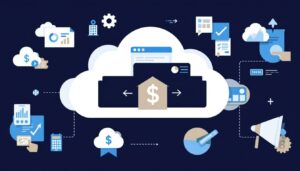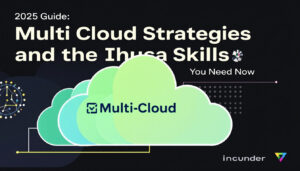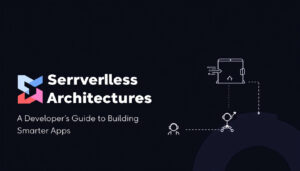Development spans various fields, including human growth, economic progress, and technological advancement. These aspects often intersect, shaping societies and influencing quality of life. Understanding the dynamics and challenges of development helps clarify how individuals and communities achieve sustainable growth.
This post provides a detailed examination of different development types, highlighting their significance in contemporary contexts. By exploring practical strategies and obstacles, readers will gain a clearer picture of how development drives change across multiple dimensions.
Types of Development and Their Impact
Understanding the various types of development is essential because each type influences different aspects of society and personal life. From individual growth to broader economic and technological advancements, development shapes the way we function and thrive. Breaking down development into distinct categories reveals how they interact and affect progress in clear, measurable ways.
Personal Development
Personal development is centered around self-improvement and the continuous process of refining skills, enhancing emotional intelligence, and cultivating knowledge. It includes setting clear goals to improve both professionally and personally, making it a lifelong journey rather than a one-time effort. This kind of development involves:
- Learning new skills to stay relevant in changing environments
- Enhancing self-awareness and emotional control to better navigate social situations
- Adapting through reflection and feedback to grow consistently
Engaging actively in personal development leads to greater career satisfaction and improved quality of life. For further insight into its workplace benefits, the article on The Importance of Personal Growth explores how personal growth directly shapes career trajectories and overall fulfillment.
Economic Development
Economic development involves improving the economic health of communities and nations through business growth, investment, and infrastructure enhancement. It is not limited to income increases but also focuses on raising living standards and expanding opportunities for all members of society. Economic development manifests through:
- Building robust infrastructure such as roads, schools, and hospitals
- Encouraging entrepreneurship and supporting small businesses
- Facilitating access to education and healthcare for community well-being
Examples range from local initiatives boosting small-town economies to national strategies that elevate entire regions. Economic progress plays a key role in reducing poverty and improving quality of life over time. Understanding economic development provides context for policy-making and investment priorities aimed at sustainable growth.
Technological Development
Technological development refers to innovation and the advancement of digital tools, systems, and processes. Technology drives progress by enabling faster communication, improved healthcare, and more efficient business operations. Critical components of technological development include:
- Introducing innovative solutions to simplify complex tasks
- Transforming industries through digital transformation
- Enhancing productivity and global connectivity
This form of development is crucial because it supports and accelerates progress in personal and economic domains alike. Insights on how innovation shapes society and industry can be found in the discussion on What Technological Innovation Really Consists Of.

Photo by Christina Morillo
Each of these development types plays a distinct but interconnected role in shaping modern lives, economies, and technologies. Recognizing their specific impacts helps identify targeted strategies for growth and improvement across different contexts. For more on the concepts and challenges of development, see Thespartane’s broader discussion about development.
The Role of Education in Development
Education plays a foundational role in development at all levels, influencing individuals, communities, and nations. It serves as the primary means by which knowledge, skills, and values are passed on, enabling people to participate fully in economic and social life. Without adequate education, development stalls because societies lack the capacity to innovate, solve problems, and improve quality of life.
Education extends beyond formal schooling; informal channels such as family, community learning, and self-study also contribute significantly. The scope of education’s impact is comprehensive—ranging from poverty reduction and health improvement to promoting social stability and gender equality.
Formal Education as a Pillar of Development
Formal education systems, including primary, secondary, and higher education, provide structured learning environments designed to equip individuals with essential knowledge and skills. These systems create a foundation for:
- Economic productivity: Educated populations tend to have higher employment rates and contribute more effectively to economic growth.
- Social empowerment: Formal education fosters critical thinking and civic engagement, encouraging participation in democratic processes.
- Health and well-being: Literacy and education correlate with better health choices and access to healthcare services.
Countries with stronger education infrastructures generally experience faster and more sustained development. For instance, countries that prioritize education investments often see improved living standards and economic resilience. The World Bank’s education overview highlights how education reduces poverty and improves health, peace, and gender equality worldwide.
Informal Education and Lifelong Learning
Education is not confined to classrooms. Informal education—through family guidance, community initiatives, apprenticeships, and online resources—supports lifelong learning and skills development. This type of education becomes vital when formal education systems face access barriers or limited resources.
Online learning platforms and vocational training programs increasingly provide flexible options that enhance skillsets outside traditional institutions. With changing job markets requiring continual adaptation, informal learning supplements formal education and helps individuals stay competitive.
Accessibility and Equity in Education
Equitable access to education significantly influences a society’s development trajectory. Barriers such as poverty, gender inequality, geographic location, and disability prevent many from benefiting fully from educational opportunities. Removing these barriers leads to:
- Greater inclusion: Education becomes a tool to level the playing field, enabling marginalized groups to improve their circumstances.
- Stronger economies: Inclusive education expands the skilled labor force.
- Enhanced social cohesion: Equity in education reduces social tensions and promotes stability.
Global efforts focus on increasing accessibility while improving education quality to achieve broad-based development. Investments in infrastructure, teacher training, and policy reforms play key roles in this effort.
Emerging Trends: Online and Hybrid Learning
Recent advances in technology have introduced new modes of education delivery, such as online and hybrid learning environments. These trends offer the potential to overcome traditional barriers by:
- Expanding reach to remote and underserved areas.
- Providing personalized learning experiences.
- Supporting continuous education beyond formal schooling years.
While these innovations hold promise, challenges like digital divides and the need for quality assurance remain. Adapting educational systems to integrate technology sustainably is critical for development.

Photo by Gül Işık
Education influences multiple aspects of development, including economic growth, social progress, and health improvements. To explore how targeted strategies can enhance development outcomes, review practical approaches on effective development strategies. For deeper understanding of education’s influence on economic stability and peace, the Center for Strategic and International Studies article on investing in quality education offers valuable insight.
Challenges and Barriers to Development
Development is a complex process influenced by numerous factors that often impede progress in different ways. Whether in social, economic, or technological contexts, these challenges can stall growth and create uneven opportunities across populations and regions. Recognizing these obstacles helps in designing better policies and interventions that address specific needs rather than applying one-size-fits-all solutions.
Social and Economic Inequality
Disparities in wealth, education, and access to opportunities remain some of the most persistent barriers to development. When resources are concentrated in the hands of a few, large segments of society find themselves excluded from basic services, job opportunities, and quality education. This exclusion limits collective growth and undermines social cohesion.
Key aspects of inequality affecting development include:
- Unequal access to education: Educational achievement strongly correlates with economic opportunity. Low-income groups face barriers to schooling, limiting their ability to participate fully in the labor market.
- Income disparity: A wide wealth gap reduces consumer spending power for the majority and concentrates economic influence, weakening broad-based economic growth.
- Opportunity gaps: Factors such as discrimination, geographic location, and family background create uneven playing fields, trapping many in cycles of poverty.
Addressing inequality is essential because it directly impacts a country’s ability to sustain development. The United Nations highlights that inequality threatens long-term social and economic development, damages poverty reduction efforts, and harms people’s overall well-being (source). Policy responses must focus on inclusive growth, fair labor laws, and investments in education and health to bridge these divides effectively.
Technological Gaps and Digital Divide
Technological advancement offers enormous potential to accelerate development, but uneven access to technology creates new gaps. The digital divide refers to the unequal distribution of access to digital tools, internet connectivity, and the skills required to use them. This divide affects individuals, businesses, and entire regions differently.
The consequences of the technological gap include:
- Limited access to information: Those without reliable internet miss out on essential educational, health, and economic resources available online.
- Reduced economic participation: Businesses that lack digital tools or connectivity cannot compete in increasingly digital markets.
- Slower innovation: Regions with poor technological infrastructure fall behind in adapting or innovating new methods.
Bridging the digital divide requires significant investments in infrastructure, digital literacy, and affordable access to technology. For regions struggling with limited financial resources and policy hurdles, these challenges can restrict their participation in broader development efforts, as outlined in regional development studies focused on resource constraints and obstacles to integration (source).

Photo by MART PRODUCTION
These technological and social disparities often overlap, compounding difficulties for marginalized groups. Addressing both sets of barriers in tandem is critical for sustainable and inclusive development. For deeper exploration of these limits and strategies to overcome them, consult the detailed discussions at Thespartane’s development challenges.
Strategies and Best Practices for Fostering Development
Successful development does not happen by chance. It requires deliberate strategies and best practices that guide progress effectively. Organizations, communities, and individuals benefit from a structured approach that emphasizes clear objectives and practical use of available resources. Two crucial areas stand out when fostering development: setting achievable goals with measurable results and leveraging technology to broaden impact and inclusion.
Setting Achievable Goals and Measuring Progress
Setting realistic and well-defined goals lays the groundwork for any successful development effort. Without clear targets, efforts can scatter, leading to inefficient use of time and resources. Here’s what effective goal-setting entails:
- Clear Goal Definition: Goals should be specific, measurable, attainable, relevant, and time-bound (SMART). This framework simplifies tracking and evaluation.
- Key Performance Indicators (KPIs): Identifying KPIs helps quantify success. KPIs translate abstract goals into concrete numbers or milestones, such as increases in productivity, revenue, or user engagement.
- Ongoing Monitoring: Consistent measurement of progress prevents deviation from goals and allows course adjustments. Tracking outcomes frequently uncovers what works and what needs improvement.
- Feedback Integration: Collecting feedback from stakeholders helps refine approaches and ensures the development process remains aligned with real needs and priorities.
By applying these tactics, organizations can maintain focus, motivate teams, and demonstrate tangible results. The discipline of tracking progress also builds credibility with investors, partners, and beneficiaries.
Leveraging Technology for Inclusive Growth
Technology plays a pivotal role in development by creating opportunities that were previously inaccessible for many. Appropriately chosen tools and platforms can support productivity and inclusion simultaneously. Consider the following practical uses:
- Digital Collaboration Platforms: Tools like project management apps and communication software enable teams to work efficiently regardless of location. These platforms reduce barriers and streamline workflows.
- Learning Management Systems (LMS): Online training and educational platforms expand access to knowledge and skills development, particularly in underserved communities.
- Data Analytics and Visualization: Applying analytics to development projects can highlight trends, resource gaps, and impact areas, enabling better decision-making.
- Mobile Technology: Smartphones and apps facilitate access to financial services, healthcare information, and market data for populations in remote or disadvantaged areas.
These technologies help bridge traditional divides while raising overall productivity and innovation. However, addressing access and digital literacy remains essential to maximize benefits.
Implementing development strategies that combine goal clarity and smart technology use can accelerate growth while ensuring it reaches a broader audience. For practical insights on initiating project-driven development ventures, explore Startup Ideas for IT and Electronics Professionals and for a deeper understanding of digital products and their challenges, review Types of digital products and their advantages.

Photo by fauxels
Conclusion
Development requires a balanced approach that addresses its many dimensions—personal, economic, and technological. Each area influences the others and contributes to overall progress when supported appropriately. Overcoming obstacles such as inequality and technological gaps is essential for equitable growth.
Careful goal-setting combined with thoughtful application of technology fosters sustainable results. Continuing to refine strategies based on clear metrics will improve outcomes over time.
For further insights on the challenges and approaches to development, consider reviewing the comprehensive discussion on development challenges and strategies. Exploring specialized tools like the React JS Developer Extension may also provide valuable perspective on technical development aspects.
Adopting a multifaceted development framework positions individuals and communities for steady, inclusive growth.









